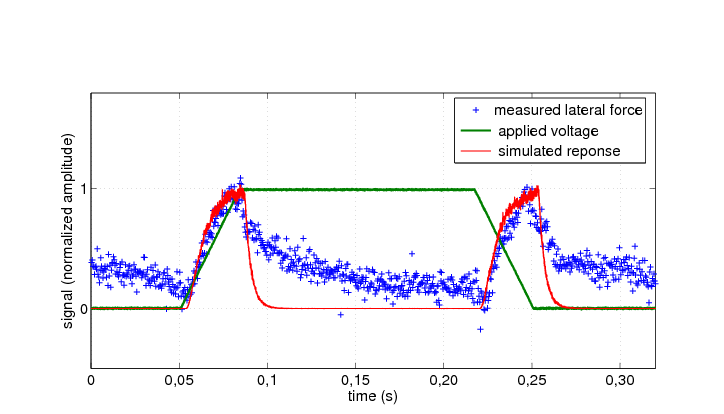Section: New Results
Dynamic Modelling of Electrovibration
Electrostatic attraction may be used to modulate the apparent friction coefficient between a fingertip and a surface to create a tactile stimulator. In this work, we want to propose an accurate modelling of the force generation. For that purpose, a specific experimental test bench has been manufactured, as presented in figure 5 .
Then, an investigation on the current modeling were carried out, with a focus on the temporal evolution and frequency dependence of the stimulus. More particularly, we considered the charge lost through the stratum corneum. Indeed, lost charges is gathered on the surface of the insulator as free surface charge, for this reason it no longer participates to the generation of the force on the finger, and consequently, to the measured force (Fig. 6 ). This happens because the charges on the surface of the insulator are no longer mechanically bounded to the finger and the insulator sustains the induced electrostatic force.
|
The improvement of the modeling is proposed to take into account this major effect, and then, it is checked with an experimental set-up and compared with literature results.




